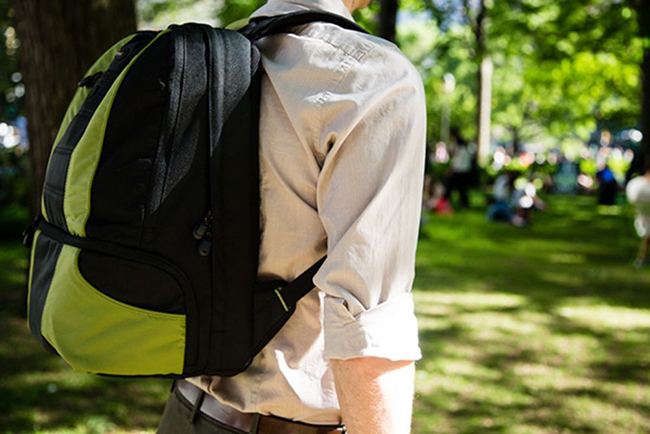
In the flurry of fashion week and all of the new handbag lines that comes with it, it's easy to lose sight of the (slightly less glamorous) functional aspects that bags play in our lives. It's ironic really, because it's probably not your most expensive investment, or even your favorite go-to bag that you reach for every day. No, if you are traveling to and from work, school, or anywhere else on a regular basis, you likely are the owner of a bag that gets used every day, and that you actually think very little about. Perhaps you are the owner of that frequently-forgotten about staple, the backpack.
Believe it or not, the oft-used yet rarely thought of backpack is actually implicit in more than a few instances of common aches and pains. While we don't really think about the implications of slinging a full backpack over one shoulder or letting the straps stretch out to the max, you may be suffering consequences without even knowing it. That nagging sort bit at the base of your lower back? That very well may be your backpack. That strange "rash" that keeps appearing on your shoulders? Yep. Also could be your backpack.
However, it's not all bad news for backpack wearers. With just two simple adjustments, you can easily rid yourself of those little aches and pains that your backpack may have been causing. Below are some simple pointers.
1. Always wear your backpack on both shoulders. Sure, it doesn't look as nonchalant, but over time, you'll save yourself the agony of having your body have to overcompensate for heavy, one-sided load bearing.
2. Make sure the straps are shored-up so that the backpack doesn't slide about on your back (causing that "rash" you thought was from your soap), or sit too low (causing your back to sway). While the straps shouldn't be so tight as to pinch your shoulders, the backpack should ideally sit in the middle of your back. If you are carrying an extra-heavy load of books and your backpack is the type that has a sternum or waist strap, use it.


